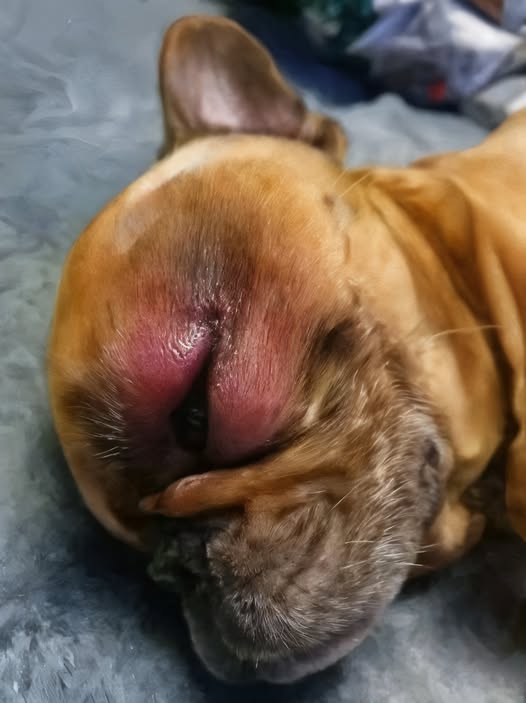What is Pyoderma?
Pyoderma is characterized by the presence of pus in the skin and can be caused by various factors, including allergies, parasites, or underlying health conditions that compromise the immune system. Common in dogs with skin issues, it can lead to discomfort and further complications if not treated promptly.
Symptoms of Pyoderma
- Redness and Swelling: The affected area often appears red, swollen, and inflamed. The skin may feel warm to the touch.
- Pustules or Lesions: You may notice small pus-filled bumps (pustules) or open sores on the skin. These can burst, leading to further irritation and potential infection.
- Itching and Discomfort: Dogs with pyoderma often scratch, lick, or bite at the affected area due to itching and discomfort. This can exacerbate the problem, leading to more severe skin damage.
- Hair Loss: The skin lesions may cause hair to fall out in patches, resulting in a noticeable change in the dog’s coat.
- Foul Odor: In some cases, the infected area can emit a foul smell due to the presence of bacteria and pus.
- Lethargy: Dogs may show signs of lethargy or decreased activity levels, particularly if they are in pain or uncomfortable.
- Fever: In severe cases, the dog may develop a fever, indicating that the body is fighting off an infection.
Causes
Several factors can contribute to the development of pyoderma in dogs, including:
- Allergies: Food or environmental allergies can lead to skin irritation and infections.
- Parasites: Fleas, ticks, or mites can cause itching and scratching, leading to secondary infections.
- Underlying Health Conditions: Conditions like diabetes, hypothyroidism, or Cushing’s disease can compromise the immune system, making dogs more susceptible to infections.
Diagnosis and Treatment
If you suspect your dog has pyoderma, it is crucial to consult a veterinarian. They will perform a thorough examination and may conduct tests, such as skin scrapings or cultures, to determine the underlying cause.
Treatment typically involves:
- Antibiotics: To combat the bacterial infection.
- Topical Treatments: Medicated shampoos or ointments to soothe the skin and reduce inflammation.
- Addressing Underlying Issues: Managing allergies or other health problems that may contribute to the condition.
Conclusion
Early recognition and treatment of pyoderma are vital for preventing complications. If you notice symptoms in your dog, seek veterinary care promptly to ensure the best outcome. Regular grooming and skin care can also help maintain your dog’s skin health and prevent future issues.
